 Chiang Mai เชียงใหม่
Chiang Mai เชียงใหม่  , Thailand, Travel Tips
, Thailand, Travel Tips
[an error occurred while processing this directive]
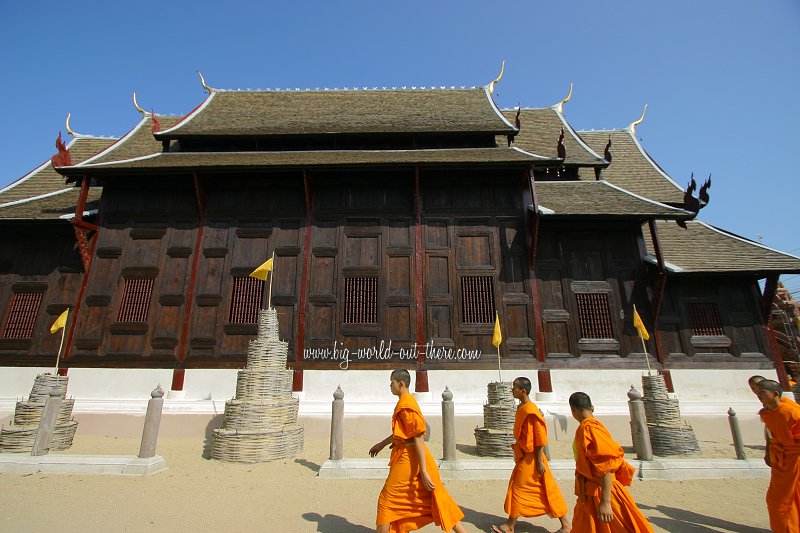 Novice monks in Chiang Mai (24 October, 2006)
Novice monks in Chiang Mai (24 October, 2006)
Chiang Mai เชียงใหม่
 , also written Chiangmai and Chiengmai, is the second largest city in Thailand. It is located at an elevation of 313m above sea level in the Ping river valley, a broad fertile plain that includes Chiang Mai and nearby Lamphun. The Ping river runs from north to south across the eastern side of Chiang Mai.
, also written Chiangmai and Chiengmai, is the second largest city in Thailand. It is located at an elevation of 313m above sea level in the Ping river valley, a broad fertile plain that includes Chiang Mai and nearby Lamphun. The Ping river runs from north to south across the eastern side of Chiang Mai.The old city of Chiang Mai was the capital of the ancient Kingdom of Lanna. The old kingdom is also known as the Kingdom of a Million Rice Fields and was also known as Lannathai. Today Chiang Mai is the capital of Chiang Mai Province. It is also the largest city in Northern Thailand and serves as the cultural and handicraft centre of the region.
Where to stay in Chiang Mai
I would recommend staying somewhere between Modern Chiang Mai and the Old City. In any case, the city is small enough for you to walk around on foot, and if you're a hardy walker with stamina, you can explore much of it without resorting to any form of transport. For most people, however, it is faster and more convenient to simply hire a tuk tuk for a single journey, or to charter it by the hour or even the whole day.360° Street View of Chiang Mai
To present Chiang Mai on Google Maps Street View, I chose to show Tha Phae Gate, the entrance into medieval Chiang Mai from the east.[an error occurred while processing this directive]
Major Tourist Destination from Chiang Mai
Places of Interest in Chiang Mai
Temples of Chiang Mai
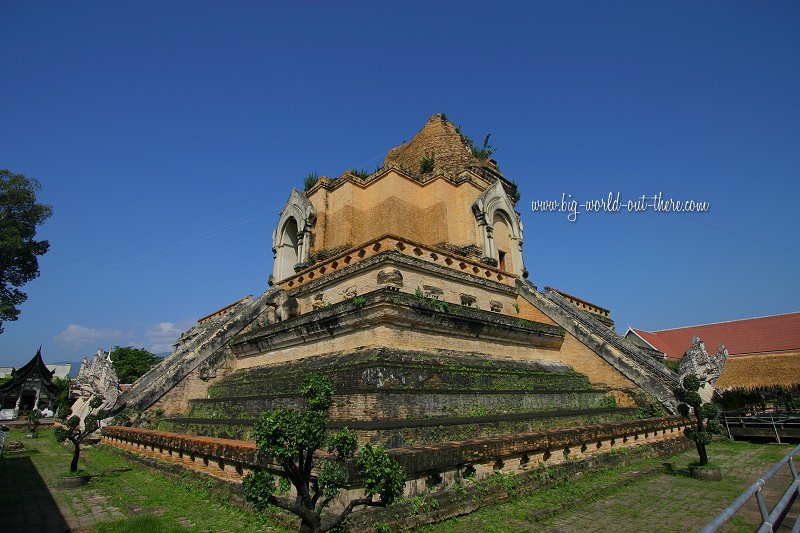 Wat Chedi Luang, Chiang Mai (24 October, 2006)
Wat Chedi Luang, Chiang Mai (24 October, 2006)
Located on the southern branch of the ancient Silk Road, Chiang Mai has long seved as an important centre for handicrafts, including umbrellas, jewellery - particularly silverware, and woodcarving. Increasingly modern, and with a population of 700,000, Chiang Mai is one of the most livable cities in Asia.
Chiang Mai's old town is located on the west side of modern Chiang Mai. The most apparent remains of the medieval city is the fortress that forms a square encircled by a moat. The area within the Old City is dense with temples, but it is not a historically preserved quarter. Apart from the temples, the buildings within the Old City are the same in form and style as elsewhere in Chiang Mai.
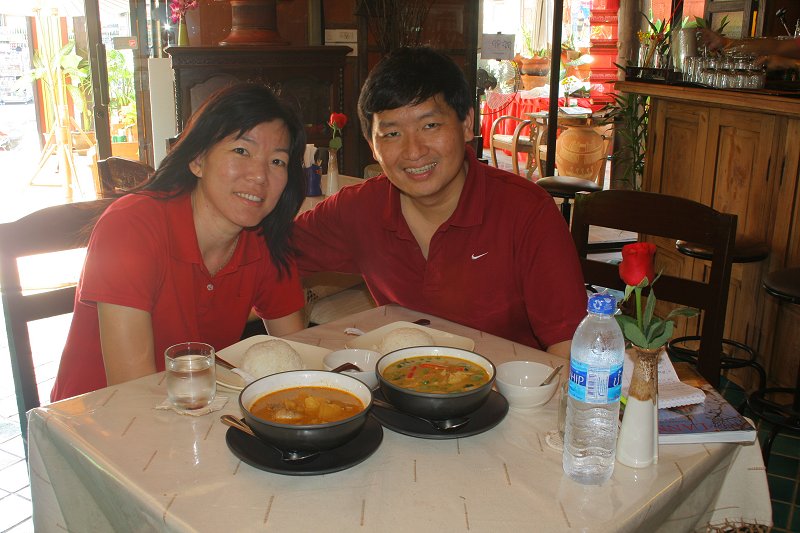 Tim and Chooi Yoke having lunch in Chiang Mai (24 October, 2006)
Tim and Chooi Yoke having lunch in Chiang Mai (24 October, 2006)
Although much of the fortress had either been torn down or broken down, parts of it still remains, and have been systematically restored. It is actually more significant than impressive. To the eye of most beholder, the remains of the fortress look like nothing more than a red-brick wall.
Layout of Old Chiang Mai
Similar to Angkor Thom and Mandalay, Old Chiang Mai was laid out as a square with a moat around it. Most of the ancient temples still exist within the old quarters surrounded by the moat and old city fortress.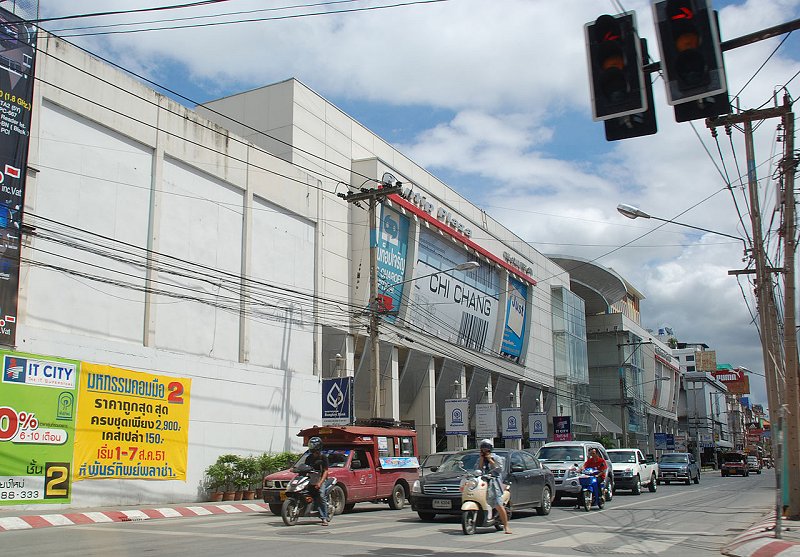 Pantip Plaza, Chiang Mai
Pantip Plaza, Chiang Mai https://commons.wikimedia.org/wiki/Category:Shopping_malls_in_Chiang_Mai#mediaviewer/File:Pantip_Plaza_Chiang_Mai.jpg
https://commons.wikimedia.org/wiki/Category:Shopping_malls_in_Chiang_Mai#mediaviewer/File:Pantip_Plaza_Chiang_Mai.jpg Manop
Manop
Going to Chiang Mai
Flying would be the most practical way to reach Chiang Mai. Several budget airlines such as Thai AirAsia now flies this route, and offers fantastic fares. Chiang Mai's airport is located on the southwest part of the city.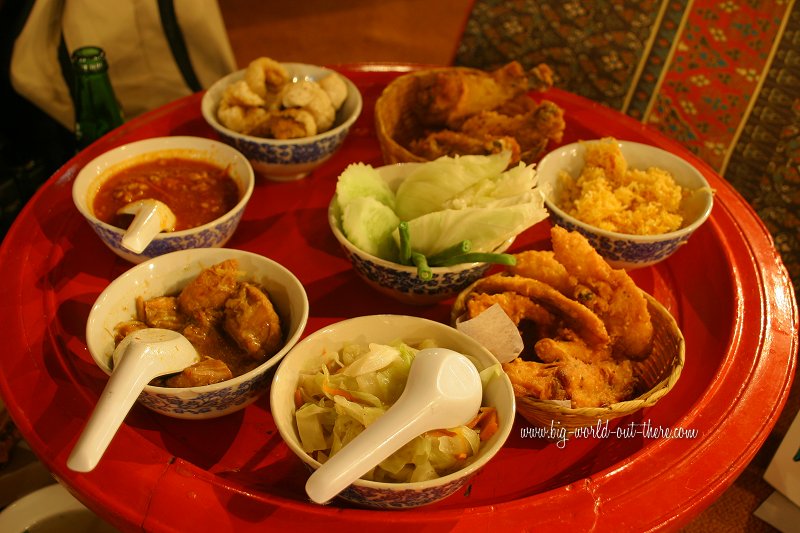 Khantoke dinner, Chiang Mai (24 October, 2006)
Khantoke dinner, Chiang Mai (24 October, 2006)
Going to Chiang Mai by Train
You can also go to Chiang Mai by train from Bangkok (though personally I find it too time consuming). Tickets can be purchased 60 days in advance. It is advisable to book in advance. The distance is 751km (467 miles), and the journey takes 13 hours. It is certainly much slower than flying from Bangkok, but you will get to view the Thai countryside all the way in between.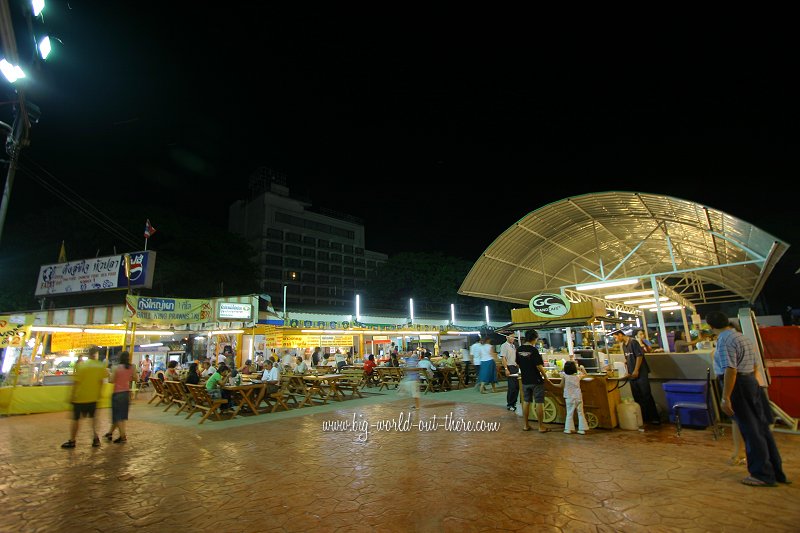 Night Bazaar hawker centre, Chiang Mai (26 October, 2006)
Night Bazaar hawker centre, Chiang Mai (26 October, 2006)
Travel within Chiang Mai
Getting around in Chiang Mai is possible by foot. The Old City is quite walkable, and you will be able to view the sights at a more unhurried pace. However, the city can get blazingly hot in the afternoon. It may be less time consuming to take a tuk tuk or songthaew.I would not have recommended tuk tuk or songthaew if you were exploring Bangkok, where there are better modes of transport such as taxis and mass rapid trains. In Chiang Mai, however, the taxis are not that many - it takes a long time before you see a taxi passing by on the road. As Chiang Mai is also less crowded and less polluted than Bangkok, it is possible, even enjoyable, to explore it by tuk tuk.
Calling a taxi
A taxi would be a convenient option for transfers between Chiang Mai and the airport, especially if you have a lot of luggage. There are now about 50 taxis in Chiang Mai, a very low number if compared to the over two thousand songthaews in the city. Call 053-279291 when you are in Chiang Mai to get a taxi. The rates are 30 baht for the first 2 km followed by 4 baht for every subsequent km.Sights in Mae Hong Son
Sights in Northern Thailand
About this website

Dear visitor, thank you so much for reading this page. My name is Timothy Tye and my hobby is to find out about places, write about them and share the information with you on this website. I have been writing this site since 5 January 2003. Originally (from 2003 until 2009, the site was called AsiaExplorers. I changed the name to Penang Travel Tips in 2009, even though I describe more than just Penang but everywhere I go (I often need to tell people that "Penang Travel Tips" is not just information about Penang, but information written in Penang), especially places in Malaysia and Singapore, and in all the years since 2003, I have described over 20,000 places.
While I try my best to provide you information as accurate as I can get it to be, I do apologize for any errors and for outdated information which I am unaware. Nevertheless, I hope that what I have described here will be useful to you.
To get to know me better, do follow me on Facebook!
Copyright © 2003-2025 Timothy Tye. All Rights Reserved.